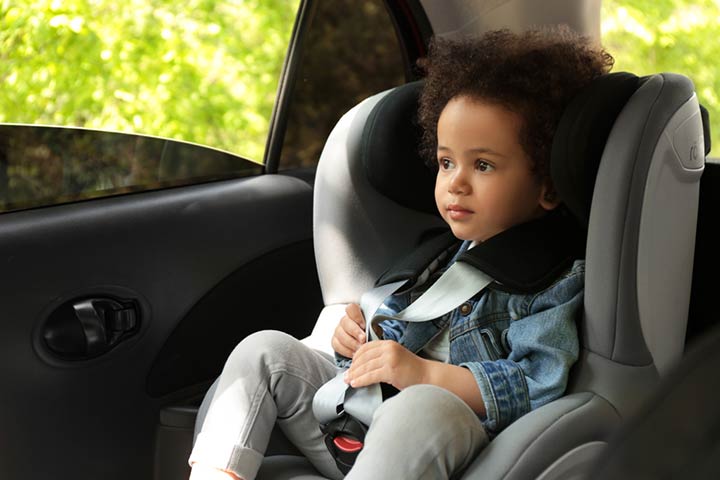
Image: Shutterstock
Parenting is one of the most challenging jobs in the world. Aside from the number of duties and responsibilities you have to shoulder, there’s lots of information you must know at heart. It’s no wonder that in some cultures, they say it takes a community to train a child.
As a parent, especially a new one, you need to rely on a lot of information to cater to your child’s needs adequately. While the information on feeding and hygiene is essential, there’s one other piece that’s extremely important – information on car seat safety.
According to the CDC (1), motor vehicle injuries are a leading cause of death among children. And 35% of the deaths that happened could’ve been prevented if parents had taken proper car seat safety measures. That is why, in this post, we’ve curated a list of car seat facts you can use to keep your child safe.
Car Seat Facts
Image: Shutterstock
At this junction, it’s only appropriate to delve into various car seat facts which you need to know in order to keep your baby safe. After all, we’re sure you desire the utmost safety for your child.
Car Seat Fact #1 – The Car Seat Isn’t Well Installed If It Moves More Than One Inch On Either Side.
If the seat of your car doesn’t feel sturdy and secure, you should check it out. Often, the reason behind this is a twisted seat belt, the seat belt passing through the wrong path, or a loose belt.
Car Seat Fact #2 – Rear-facing Always. No Exceptions.
According to the recommendations of the American Academy of Pediatricians, parents should keep their toddlers in rear-facing car seats until the age of two (2). Rear-facing seats provide better support for the head, neck, and spine of infants in case of a crash.
Image: Shutterstock
Car Seat Fact #3 – Always Keep The Shoulder Harness As Tight As Possible
You can guarantee this by doing the shoulder harness pinch test. When you pinch the harness, at the slightest feel of a slack, tighten it. This procedure is a lifesaver; so, your child’s cry mustn’t dissuade you.
Car Seat Fact #4 – Never Wear Bulky Clothes Underneath The Harness Of The Car Seat
In a crash, bulky clothes, such as winter coats and swimsuits, flatten out and leave extra spaces under the harness. Your child can be thrown off the seat as a result. This rule applies to adults as well.
Image: Shutterstock
Car Seat Fact #5 – Always Use The Top Tether
All cars sold since 2001 have three anchor points. Manufacturers provide them; so, parents properly secure their children and prevent them from falling forward in a crash. So, don’t forget to buckle it.
Car Seat Fact #6 – An Expensive Car Seat Isn’t Always The Safest
The most important thing is to find the one that fits your car and suits your child. And ensure it’s installed properly.
Image: Shutterstock
Car Seat Fact #7 – Don’t Be In A Hurry To Ditch The Boosters
If your child is below 4ft 9inches in height, use the boosters. This requirement could mean they’d use boosters until age 10 to 12. So don’t be in a hurry to transition them.
Car Seat Fact #8 – Hire A Technician For Car Seat Installation
The decision of who will install your car seat isn’t one to make lightly. Ensure you use the services of certified car seat technicians if it’s not your area of expertise.
Image: Shutterstock
Car Seat Fact #9 – Never Attach Accessories To The Car Seat
In a crash, accessories can get detached and become highly dangerous. If they don’t come with the car seat or the manufacturer doesn’t recommend them, don’t use them.
Car Seat Fact #10 – Get A Car Seat Alarm
There’s the tendency that you forget you have a baby in the car. A car seat alarm will help you remember, and this can save a life.
As stated earlier, many infant deaths that occur as a result of car crashes are preventable. You can use this information to ensure that you take the necessary precautions to keep your child safe before taking that next road-trip.


















